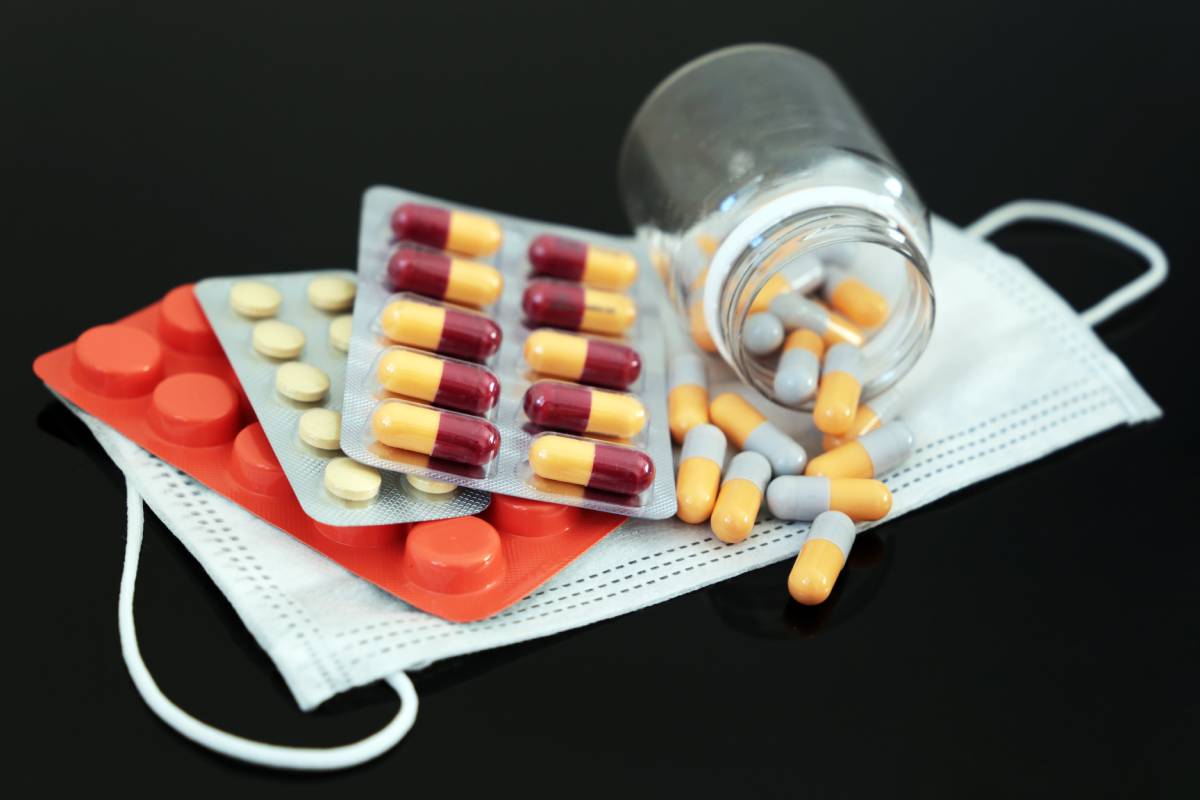Available COVID-19 Therapeutics

Throughout the COVID-19 pandemic, significant advances have been made in the discovery of therapeutics to counter the disease [1]. Treatments range from newly developed medications, like sotrovimab, to repurposed ones, such as remdesivir [2]. While the recent omicron variant has limited the effects of several medications, other drugs remain promising options for patients [3].
Nirmatrelvir-ritonavir is an antiviral medication that is administered orally [4]. It has been authorized for emergency use by the US Food and Drug Administration (FDA) since December 22nd, 2022 [1]. The recommended dose is two 150 mg tablets of nirmatrelvir and one 100 mg tablet of ritonavir, although, for patients with moderate renal failure, only one tablet of nirmatrelvir is advised [4]. A trial following 2,246 non-hospitalized COVID-19 patients found that people who took the drug experienced an 88% reduction in death and hospitalization, compared to those who received a mere placebo [1]. It should be noted that the trial group received the medication within five days of presenting symptoms and were at high risk of disease progression [1]. These results are promising, but adverse events caused by the medication can occur [4]. They typically consist of diarrhea, increased blood pressure, dysgeusia, vomiting, and headache [4].
Sotrovimab is another newly developed drug that has recently been approved for use in the United States and the United Kingdom [1, 5]. Developed by GSK and Virbiotechnology, the medication contains a single monoclonal antibody [5]. By binding to the SARS-CoV-2 spike protein, it prevents the protein from latching onto and infecting human cells [5]. A promising study conducted by Gupta et al. found that sotrovimab was highly effective against several variants of interest and concern, but they did not consider how it fared against omicron [6]. A recent, non-peer-reviewed study found that sotrovimab remained active against omicron [1]. Accordingly, the National Institutes of Health recommended the medication for use in places reporting high rates of omicron infection [1].
Unlike nirmatrelvir-ritonavir and sotrovimab, remdesivir is a drug that predates the COVID-19 pandemic [2]. Despite being developed to counter Ebola infection, current studies indicate that, compared to a placebo, remdesivir can significantly reduce mortality rates and increase cure and improvement rates among patients hospitalized with COVID-19 [2]. However, these beneficial effects tend to decrease among people older than 60 years of age, and some patients may be resistant to remdesivir [7].
For remdesivir-resistant patients, molnupiravir can be an alternative form of treatment [7]. The antiviral drug inhibits RdRP, a key enzyme driving COVID-19 replication [7]. While the drug has exhibited promising results in animal studies, researchers await the results of the multiple clinical trials testing the medication that are currently underway [7]. A phase 3 trial has already reported that molnupiravir reduces hospitalization and death by 30%, compared to placebo, among patients with mild to moderate COVID-19 infections [7]. Before prescribing this medication, medical teams should consider the possibility that molnupiravir may be able to mutate human DNA [1]. As such, the drug may not be suitable for widespread use at the moment.
Although more testing must occur to ascertain the efficacy of these treatments, the evidence in favor of nirmatrelvir-ritonavir, sotrovimab, remdesivir, and molnupiravir is promising. Optimistically, these treatments will provide the medical community with the tools necessary to reduce hospitalizations and deaths, and ultimately bring an end to the COVID-19 pandemic.
References
[1] R. T. Gandhi, P. N. Malani, and C. del Rio, “COVID-19 Therapeutics for Nonhospitalized Patients,” JAMA, Updated January 14, 2022. [Online]. Available: https://doi.org/10.1001/jama.2022.0335.
[2] V. Gupte et al., “Safety and clinical outcomes of remdesivir in hospitalised COVID-19 patients: a retrospective analysis of active surveillance database,” BMC Infectious Diseases, vol. 22, no. 1, p. 1-8, January 2022. [Online]. Available: https://doi.org/10.1186/s12879-021-07004-8.
[3] L. L. Borio, R. A. Bright, and E. J. Emanuel, “A National Strategy for COVID-19 Medical Countermeasures: Vaccines and Therapeutics,” JAMA, vol. 327, no. 3, p. 215-216, January 2021. [Online]. Available: https://doi.org/10.1001/jama.2021.24165.
[4] E. G. McDonald and T. C. Lee, “Nirmatrelvir-ritonavir for COVID-19,” CMAJ, Updated February 3, 2022. [Online]. Available: https://doi.org/10.1503/cmaj.220081.
[5] E. Mahase, “Covid-19: UK approves monoclonal antibody sotrovimab for over 12s at high risk,” BMJ, Updated December 2, 2021. [Online]. Available: https://doi.org/10.1136/bmj.n2990.
[6] A. Gupta et al., “Early Treatment for Covid-19 with SARS-CoV-2 Neutralizing Antibody Sotrovimab,” The New England Journal of Medicine, vol. 385, p. 1941-1950, November 2021. [Online]. Available: https://doi.org/10.1056/NEJMoa2107934.
[7] F. Pourkarim, S. Pourtaghi-Anvarian, and H. Rezaee, “Molnupiravir: A new candidate for COVID-19 treatment,” Pharmacology Research & Perspectives, vol. 10, no. 1, p. 1-7, December 2021. [Online]. Available: https://doi.org/10.1002/prp2.909.